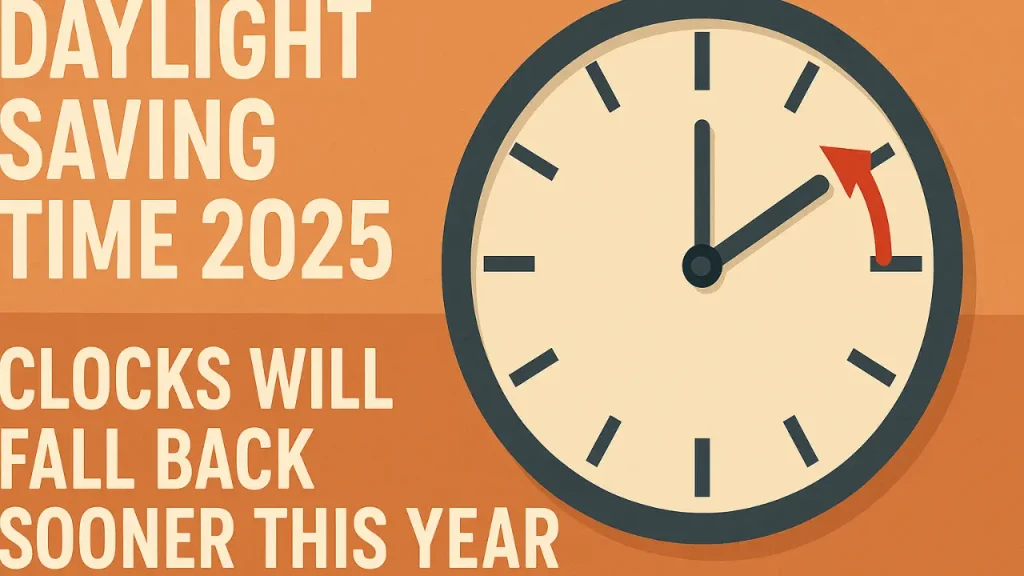In what is being hailed as one of the most welcomed updates in recent years, the Social Security Administration (SSA) has officially announced changes to how retirement benefits interact with earned income starting in January 2026. For millions of retirees who continue to work, this is more than just a technical adjustment—it’s a lifeline.
The new rule allows retirees to earn more money from work without having their Social Security benefits reduced, easing the financial pressure that inflation and rising costs have placed on older Americans. The reform recognizes a changing reality: many retirees still want—or need—to work, and penalizing them for doing so has long been a sore point in the Social Security system.
This article explores what’s changing, how it affects retirees and future beneficiaries, and what steps you should take to prepare before 2026.
Why the Change Matters
For decades, Social Security beneficiaries under full retirement age (FRA) have faced a strict earnings limit. If they made more than the government’s threshold, their benefits were partially withheld. While the SSA later recalculated and restored some of these withheld funds, the process often felt punitive and confusing.
But starting in 2026, the SSA is modernizing this structure to reflect today’s economic and demographic realities. As inflation continues to raise the cost of living, many older Americans find themselves supplementing their fixed income with part-time or even full-time work.
This change not only helps retirees keep more of what they earn—it could also encourage workforce participation among older citizens, helping offset labor shortages and ease pressure on the Social Security Trust Fund.
The 2026 Rule Change Explained
Under the current (2025) rules, Social Security beneficiaries can earn up to $23,400 per year before their benefits are affected. For every $2 earned above that limit, the SSA withholds $1 in benefits.
Beginning January 2026, the annual earnings limit will increase significantly, likely exceeding $25,000, according to internal projections and early estimates. This means retirees will have more flexibility to work without triggering benefit reductions.
Additionally, the rule maintains different treatment depending on whether or not you’ve reached your Full Retirement Age (FRA)—typically around 67 years for those born after 1960.
Here’s how the new structure looks compared to the current one:
| Category | 2025 Rule | 2026 Rule (Expected) | Impact |
|---|---|---|---|
| Earnings Limit (Before FRA) | $23,400/year | Over $25,000/year (exact amount TBD) | Retirees can earn more without losing benefits |
| Withholding Rate (Before FRA) | $1 withheld for every $2 above limit | Same | More room before penalty kicks in |
| Earnings Limit (In Year You Reach FRA) | $62,160/year | Likely adjusted higher | Reduced withholding near FRA |
| Withholding Rate (During FRA Year) | $1 for every $3 above limit | Same | Encourages continued employment |
| After Full Retirement Age | No limit | No limit | No change—earn freely |
How the Current System Works
Under existing law, if you start receiving Social Security before reaching your Full Retirement Age (FRA) and continue to work, part of your benefit may be withheld.
There are two primary thresholds:
- Before Full Retirement Age:
- You can earn up to $23,400 (2025 limit).
- For every $2 earned above that, $1 is withheld.
- In the Year You Reach FRA:
- You can earn up to $62,160.
- For every $3 earned above that, $1 is withheld—but only until the month you reach FRA.
Once you reach your Full Retirement Age, the SSA recalculates your benefit amount, crediting you for months when your benefits were withheld. This recalculation results in a slight permanent increase in your monthly payment moving forward.
The new 2026 update won’t remove these mechanics but makes them more forgiving by raising the income cap.
Why the Change Was Needed
The SSA’s decision comes at a time when the U.S. faces shifting demographic and economic realities:
- One in four Americans aged 65 and older now continues to work in some capacity.
- Life expectancy has risen dramatically since the creation of Social Security in 1935, with average Americans living well into their 80s.
- Inflation has eroded the purchasing power of fixed retirement income.
- Labor shortages in sectors like healthcare, education, and retail have created incentives for older workers to stay active.
In essence, Social Security’s work-penalty structure was created in a different era—one where retirees could afford to stop working entirely. The 2026 reform acknowledges that this is no longer realistic for millions of Americans.
Economic Context
To understand how impactful this change is, it’s worth considering how Social Security interacts with the broader economy:
- The average monthly Social Security benefit in 2025 is around $1,915, or about $22,980 annually.
- Inflation has averaged 3.4% annually since 2021, driving up costs for essentials such as housing, food, and healthcare.
- A senior household’s average expenditure exceeds $53,000 per year, meaning that for many retirees, Social Security alone covers less than half of their living expenses.
Given these numbers, it’s no surprise that nearly 30% of retirees rely on part-time work to supplement their income. The SSA’s 2026 change gives them more breathing room.
Impact on Retirees
This reform is a win for both retirees and the broader economy.
Financially, it means:
- You’ll be able to earn more before facing benefit reductions.
- You’ll keep more of what you earn, improving monthly cash flow.
- Retirees who still enjoy working will no longer feel as penalized.
Psychologically, the rule could encourage a sense of autonomy and productivity among older Americans. Studies show that working beyond retirement age—especially in flexible or purpose-driven roles—can boost mental health, social engagement, and cognitive sharpness.
Moreover, the SSA’s move reflects an understanding that retirement is no longer a binary state of “working” versus “not working.” Many people now prefer phased retirement, balancing part-time work and benefits.
Broader Implications for the Social Security System
This policy change is also part of a broader attempt to modernize and sustain Social Security beyond 2030. The system’s trust funds are projected to be depleted by 2033, at which point the SSA would only be able to pay about 77% of scheduled benefits from payroll taxes alone.
By incentivizing older Americans to stay in the workforce:
- The government benefits from continued payroll tax contributions.
- The need for early or full benefits decreases slightly.
- Economic productivity among older demographics increases.
In short, the 2026 rule serves both social and fiscal objectives—helping individuals while strengthening the overall system.
Preparing for the 2026 Change
Although the rule doesn’t take effect until January 2026, it’s wise to start preparing now. Here’s what retirees and soon-to-be retirees should consider:
Assess Your Full Retirement Age (FRA)
Know when you’ll reach FRA. For most Americans born after 1960, it’s 67 years old.
Review Your Work Plans
If you’re currently working or plan to return to work, calculate your expected earnings to see how they interact with your benefits.
Estimate Your 2026 Income
With the new threshold, you may find that continuing part-time work is now financially worthwhile.
Consult the Social Security Administration
Use the SSA’s online calculators or speak with a representative to understand how your work income will affect your payments.
Talk to a Financial Advisor
Integrate this change into your retirement plan—especially if you rely on both Social Security and 401(k) or IRA distributions.
Example Scenarios
Let’s illustrate how this change could play out for typical retirees:
| Retiree Profile | Annual Earnings (2025) | Excess Earnings Over Limit (2025) | Benefits Withheld (2025) | Projected Outcome (2026) |
|---|---|---|---|---|
| Mary (Age 65, working part-time) | $28,000 | $4,600 | $2,300 withheld | No withholding if limit rises to $25,000 |
| John (Age 66, self-employed) | $32,000 | $8,600 | $4,300 withheld | Reduced withholding; more take-home pay |
| Lisa (Age 67, at FRA) | $40,000 | N/A | $0 withheld | No change (still no limit after FRA) |
These examples show how even modest increases in the earnings threshold can significantly affect retirees’ disposable income.
Frequently Asked Questions (FAQs)
What exactly is changing in 2026?
The SSA is raising the annual earnings limit for retirees who work while collecting benefits. This means you can earn more before any of your Social Security payments are withheld.
When will the new rule take effect?
The new limit becomes effective January 2026, impacting benefits paid in that year.
How much can I earn before my benefits are reduced?
The final figure will be announced in late 2025, but early indications suggest it will exceed $25,000 annually.
Does this mean I can work without losing any benefits?
Not entirely. If you earn above the new threshold and haven’t reached full retirement age, some benefits may still be withheld—but you’ll have more earning room before that happens.
What if I’m already at full retirement age?
Once you reach Full Retirement Age (FRA), there’s no limit on how much you can earn. You’ll receive your full Social Security benefits regardless of your income.
Will my benefits increase if money is withheld?
Yes. When you reach FRA, the SSA will recalculate your benefit and restore amounts that were previously withheld, slightly increasing your monthly payments moving forward.
Why is the SSA making this change now?
The change reflects ongoing economic pressures—especially inflation—and the growing trend of older Americans staying in the workforce longer. It’s also part of efforts to make the system more sustainable.
How can I prepare?
Review your expected earnings, understand your FRA, and consult both the SSA and a financial planner before 2026 to ensure your benefits and income strategy align.
The Bigger Picture: Redefining Retirement
This change highlights a larger shift in how America views retirement. Once considered a full stop, retirement has become more fluid—a time for flexible work, part-time projects, or entrepreneurial ventures.
According to recent surveys:
- 61% of retirees say they would prefer to keep working if health allows.
- 43% cite financial need as the main reason, while 37% say they enjoy the sense of purpose work provides.
By reducing penalties for work, the SSA is acknowledging this evolving landscape—one where financial independence and active aging go hand in hand.
The Road Ahead
While this change is a step forward, challenges remain. The Social Security Trust Fund still faces depletion within the next decade unless lawmakers find long-term funding solutions.
Nonetheless, reforms like this help ease short-term burdens and promote financial flexibility for millions of retirees. It’s a signal that the SSA recognizes the need for modernization and fairness in the face of changing social and economic conditions.
Final Thoughts
The 2026 Social Security earnings limit increase is more than just a policy tweak—it’s a reflection of the times we live in. Inflation, longevity, and shifting work patterns have made traditional notions of retirement obsolete.
By allowing retirees to earn more without losing benefits, the SSA has taken a practical step toward a system that rewards work, supports financial independence, and adapts to 21st-century realities.
So whether you’re already collecting benefits or planning your future retirement, 2026 brings genuine good news: you’ll finally be able to keep more of what you earn.
Prepare wisely, stay informed, and make the most of the opportunities this change brings—because your golden years deserve to shine brighter than ever.












Leave a Comment